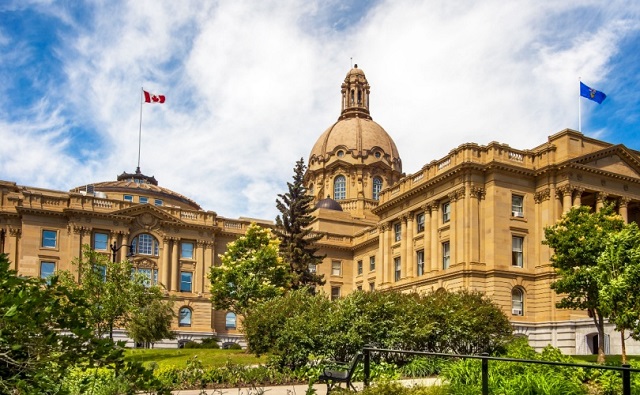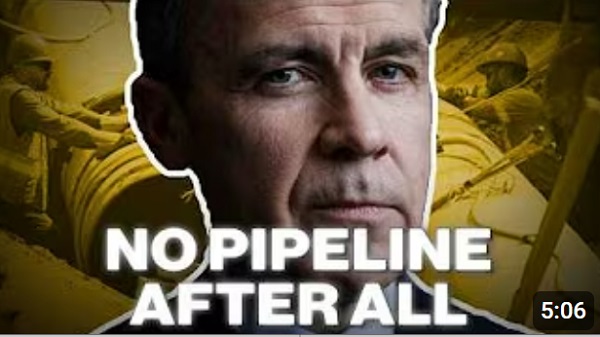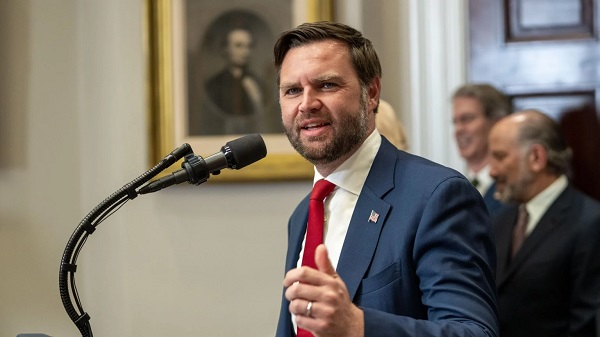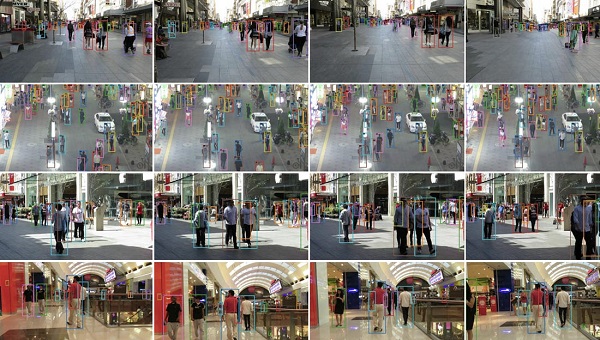Alberta
Federal emissions plan will cost Albertans dearly

A new report finds every Albertan will have $3,300 less for essentials if the ineffective federal emissions reduction plan is left in place.
For years, the federal government has been targeting net zero by 2050 and putting in place an aggressive approach to reduce emissions as outlined in its Emissions Reduction Plan. This scheme, which included the carbon tax, emissions cap, electricity regulations and other initiatives, has drawn strong criticism from provinces, industry, business groups and Canadians.
A report by the Conference Board of Canada, commissioned by Alberta’s government, sheds new light on the negative impacts of the federal government’s punitive environmental approach. By 2050, Alberta’s GDP will shrink by 11 per cent, employment will decline by four per cent and the average person will have $3,300 less in disposable income – while Canada still misses its emissions target.
Alberta’s government is calling on the next federal government to permanently abandon the carbon tax, emissions cap and the entire flawed federal approach. Instead, the federal government should focus on reducing emissions without hurting the economy or making life harder for Albertan and Canadian families.
“These findings should send a message to whoever ends up being the next federal government. Our province remains firmly committed to protecting the environment and creating a future for our children, but that can’t be achieved by trampling on Canadians’ livelihoods. Ottawa has offered nothing but penalties and vague rhetoric. Instead of meaningful incentives to reduce emissions, we get carbon taxes, a production cap, and layers and layers of costly regulations, all burdening families and workers who are already stretched thin.”
The Conference Board of Canada assessed how Alberta businesses and consumers will react to the federal policies based on the costs and effectiveness of the technologies necessary to meet the federal targets.
It found that Alberta will be disproportionately impacted by the current federal plan, experiencing a deep recession in 2030 and subsequently slower economic growth going forward. According to the report, compared to the 2050 baseline scenario, Alberta’s GDP, jobs, revenue and incomes will significantly decline because of federal emissions policies:
- GDP: Projected to be 11 per cent lower
- Employment: Projected to be 4.1 per cent lower
- Government revenues: Projected to be 9.3 per cent lower
- Real (price adjusted) incomes: Down $3,300 (or 7.3 per cent) per person
Nationally, real GDP in Canada is estimated to fall 3.8 per cent in 2050. Canadian oil and gas production in 2050 would be 37 per cent lower, mostly due to the proposed federal oil and gas production cap.
On March 12, the independent Parliamentary Budget Officer (PBO) – following on reports from S&P Global, Deloitte Canada and the Conference Board of Canada – released a scathing report outlining the negative impacts of the proposed federal oil and gas emissions cap. According to the report, the PBO estimates that the federal government’s cap alone will in fact slash oil and gas production by almost 5 per cent, all while these required production cuts reduce nominal GDP by $20.5 billion in 2032.
The PBO report also suggests this policy will reduce economy-wide employment in Canada by 40,300 jobs and full-time equivalents by 54,400 in 2032.
Alberta’s government continues to call for the next federal government to focus on policies that grow the economy, while working with provinces and respecting the Canadian constitution.
Quick facts:
- The Conference Board of Canada scenarios assume oil and gas production grow to 9.7 million barrels of oil equivalent in 2050 with peak oil production of 9.9 million barrels per day in 2042, reflecting continued global oil demand.
- Canada’s employment is estimated to be 2.6 per cent lower, consumer prices 2.5 per cent higher, and real GDP 3.8 per cent lower in 2050 under the federal plan (compared to the baseline scenario).
- According to the report, Canada’s electricity sector would need to reduce emissions by 376 per cent below baseline in 2050, through significant investment in carbon capture and storage, to meet the federal net-zero commitment.
- The Conference Board of Canada’s realistic scenario assumes carbon capture and storage (CCS) will be deployed at a slower rate than is generally assumed by the federal government.
- Canada’s Emission Reduction Plan, released in March 2022, is a roadmap and its policies include the carbon tax, Clean Electricity Regulation, Clean Fuel Regulation, federal oil and gas emissions cap, methane reduction targets, zero emission vehicle mandates, and various other subsidy programs.
- The Conference Board of Canada’s report on assessing the impact of the federal Emissions Reduction Plan was completed prior to U.S. President Donald Trump’s administration and does not include the impacts of potential U.S. tariffs.
- U.S. tariffs have further illustrated the importance of market access to Canada’s energy security.
Related information
Alberta
They never wanted a pipeline! – Deputy Conservative Leader Melissa Lantsman

From Melissa Lantsman
Turns out the anti-development wing of the Liberal Party never stopped running the show.
Today, we’ll see if the Liberals vote for the pipeline they just finished bragging about.
Spoiler: they won’t. Because with the Liberals, the announcements are real, but the results never are.
Alberta
Premier Smith: Canadians support agreement between Alberta and Ottawa and the major economic opportunities it could unlock for the benefit of all

From Energy Now
By Premier Danielle Smith
Get the Latest Canadian Focused Energy News Delivered to You! It’s FREE: Quick Sign-Up Here
If Canada wants to lead global energy security efforts, build out sovereign AI infrastructure, increase funding to social programs and national defence and expand trade to new markets, we must unleash the full potential of our vast natural resources and embrace our role as a global energy superpower.
The Alberta-Ottawa Energy agreement is the first step in accomplishing all of these critical objectives.
Recent polling shows that a majority of Canadians are supportive of this agreement and the major economic opportunities it could unlock for the benefit of all Canadians.
As a nation we must embrace two important realities: First, global demand for oil is increasing and second, Canada needs to generate more revenue to address its fiscal challenges.
Nations around the world — including Korea, Japan, India, Taiwan and China in Asia as well as various European nations — continue to ask for Canadian energy. We are perfectly positioned to meet those needs and lead global energy security efforts.
Our heavy oil is not only abundant, it’s responsibly developed, geopolitically stable and backed by decades of proven supply.
If we want to pay down our debt, increase funding to social programs and meet our NATO defence spending commitments, then we need to generate more revenue. And the best way to do so is to leverage our vast natural resources.
At today’s prices, Alberta’s proven oil and gas reserves represent trillions in value.
It’s not just a number; it’s a generational opportunity for Alberta and Canada to secure prosperity and invest in the future of our communities. But to unlock the full potential of this resource, we need the infrastructure to match our ambition.
There is one nation-building project that stands above all others in its ability to deliver economic benefits to Canada — a new bitumen pipeline to Asian markets.
The energy agreement signed on Nov. 27 includes a clear path to the construction of a one-million-plus barrel-per-day bitumen pipeline, with Indigenous co-ownership, that can ensure our province and country are no longer dependent on just one customer to buy our most valuable resource.
Indigenous co-ownership also provide millions in revenue to communities along the route of the project to the northwest coast, contributing toward long-lasting prosperity for their people.
The agreement also recognizes that we can increase oil and gas production while reducing our emissions.
The removal of the oil and gas emissions cap will allow our energy producers to grow and thrive again and the suspension of the federal net-zero power regulations in Alberta will open to doors to major AI data-centre investment.
It also means that Alberta will be a world leader in the development and implementation of emissions-reduction infrastructure — particularly in carbon capture utilization and storage.
The agreement will see Alberta work together with our federal partners and the Pathways companies to commence and complete the world’s largest carbon capture, utilization and storage infrastructure project.
This would make Alberta heavy oil the lowest intensity barrel on the market and displace millions of barrels of heavier-emitting fuels around the globe.
We’re sending a clear message to investors across the world: Alberta and Canada are leaders, not just in oil and gas, but in the innovation and technologies that are cutting per barrel emissions even as we ramp up production.
Where we are going — and where we intend to go with more frequency — is east, west, north and south, across oceans and around the globe. We have the energy other countries need, and will continue to need, for decades to come.
However, this agreement is just the first step in this journey. There is much hard work ahead of us. Trust must be built and earned in this partnership as we move through the next steps of this process.
But it’s very encouraging that Prime Minister Mark Carney has made it clear he is willing to work with Alberta’s government to accomplish our shared goal of making Canada an energy superpower.
That is something we have not seen from a Canadian prime minister in more than a decade.
Together, in good faith, Alberta and Ottawa have taken the first step towards making Canada a global energy superpower for benefit of all Canadians.
Danielle Smith is the Premier of Alberta
-

 Censorship Industrial Complex2 days ago
Censorship Industrial Complex2 days agoUS Condemns EU Censorship Pressure, Defends X
-

 Banks2 days ago
Banks2 days agoTo increase competition in Canadian banking, mandate and mindset of bank regulators must change
-

 Dan McTeague2 days ago
Dan McTeague2 days agoWill this deal actually build a pipeline in Canada?
-

 Bruce Dowbiggin1 day ago
Bruce Dowbiggin1 day agoWayne Gretzky’s Terrible, Awful Week.. And Soccer/ Football.
-

 Opinion2 days ago
Opinion2 days agoThe day the ‘King of rock ‘n’ roll saved the Arizona memorial
-

 Focal Points2 days ago
Focal Points2 days agoCommon Vaccines Linked to 38-50% Increased Risk of Dementia and Alzheimer’s
-

 espionage1 day ago
espionage1 day agoWestern Campuses Help Build China’s Digital Dragnet With U.S. Tax Funds, Study Warns
-

 Business1 day ago
Business1 day agoThe EU Insists Its X Fine Isn’t About Censorship. Here’s Why It Is.








